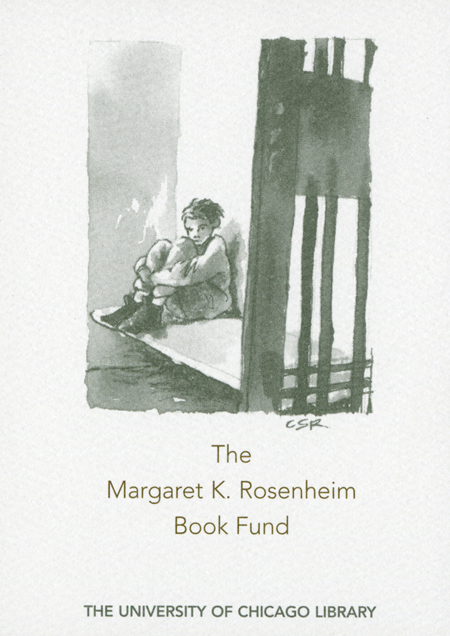Review by Choice Review
An authority on juvenile violence and aggression, Garbarino (Loyola Univ., Chicago) provides a detailed and fascinating account of the rise of girls' violence, thus complementing his Lost Boys: Why Our Sons Turn Violent and How We Can Save Them (1999). The author blends summaries of theory and research with interesting case study reports to provide a convincing explanation of the factors that converge to cause a rise in violence by girls. In exploring cultural changes encouraging girls to become more aggressive, the author analyzes cartoons, television programs, movies, music videos, language, and competitive sports. He considers how characteristics such as assertiveness that were once deemed "unladylike" are now much more socially acceptable and even desirable for females, and at the same time he acknowledges that assertiveness and aggression do not seem to function in the same way for boys and girls. For example, acts of aggression can "clear the air" for boys with little or no danger of ending interpersonal relationships, whereas girls are far more likely to end a relationship after an aggressive exchange. Garbarino closes with a discussion of interventions designed to deal with relational aggression and treatments for troubled or delinquent girls. ^BSumming Up: Recommended. All readers; all levels. R. B. Stewart Jr. Oakland University
Copyright American Library Association, used with permission.
Review by Booklist Review
Garbarino, author of Lost Boys (2002), now investigates girlhood aggression. Through voluminous research and brief first-person statements from teens, Garbarino uncovers a steadily increasing trend toward violence among America's girls. He asks, Are the forces that put women into professional basketball the same forces that put U.S. Army private Lynndie England in the position of torturing Iraqi prisoners at the Abu Ghraib prison? He finds answers in perspectives as varied as those of Thich Nhat Hanh, Mary Pipher, and Betty Friedan. In discussing the influence of pop culture on girls, Garbarino analyzes the impact of Hermione's socially acceptable punch in the third Harry Potter movie and the physical aggression in the cartoon Powerpuff Girls. He also investigates the traditional sources of acceptance for girls and their growing frustration with relying on others for personal validation, a shift that has girls excelling in sports as they rely on aggressive play to achieve victory. The message that aggression works is taught loud and clear in American society, and, as Garbarino proves, today's young girls are clearly listening. --Colleen Mondor Copyright 2005 Booklist
From Booklist, Copyright (c) American Library Association. Used with permission.
Review by Publisher's Weekly Review
Garbarino, a respected authority on juvenile violence and aggression (Lost Boys), takes a fascinating look at girls getting physical-from the assertive physicality expressed by healthy girls to criminal violence on the part of troubled ones. He lauds girls' release from the obligation to be "ladylike" in an increasingly egalitarian society, a "new freedom... [that] can boost self-esteem and self-confidence." But at the other end of the spectrum are girls who are more vulnerable to today's increasingly "toxic social environment"-a deleterious entanglement of hypersexuality and materialism-and prone to asocial violence. Garbarino cites U.S. Justice Department statistics that the rate of girls arrested for assault is approaching that of boys. Examining biology, early childhood development and the effects of mass media, he builds on the work of other psychologists and social historians while adding texture to his accessible narrative with first-person accounts of girls' experiences-X-rated name-calling, punching, brawls with baseball bats. Society, he asserts, should allow girls to be "physical and popular in a nonsexual and nonmaterialistic way." What girls need, he concludes in this evenhanded but eye-opening book, is positive identity, a sense of rootedness and spirituality, and benevolent adult involvement in their lives. (On sale Feb. 20) (c) Copyright PWxyz, LLC. All rights reserved
(c) Copyright PWxyz, LLC. All rights reserved
Review by Library Journal Review
Previously, Rosalind Wiseman's Queen Bees and Wannabees: Helping Your Daughter Survive Cliques, Gossip, Boyfriends, and Other Realities of Adolescence and Rachel Simmons's Odd Girl Out: The Hidden Culture of Aggression in Girls assessed the burgeoning physical and relational aggression in girls. Garbarino (chair, humanistic psychology, Loyola Univ.; Lost Boys: Why Our Sons Turn Violent and How We Can Save Them) continues that work here but goes beyond those previous books in elucidating the cultural underpinnings. His research includes interviews with female students at Cornell University who relate chilling stories of childhood bullying and abuse that confound the stereotypes of feminine behavior. Garbarino attributes these behavioral shifts to increased participation in sports, escalating media depictions of violence, and general societal shifts toward rewarding aggression. His solution is to provide education to inculcate prosocial assertiveness rather than destructive violence. Ironically, he depicts the problem so powerfully that his reasonable solution pales by comparison. Recommended for all public and academic libraries.-Lynne F. Maxwell, Villanova Law Sch. Lib., PA (c) Copyright 2010. Library Journals LLC, a wholly owned subsidiary of Media Source, Inc. No redistribution permitted.
(c) Copyright Library Journals LLC, a wholly owned subsidiary of Media Source, Inc. No redistribution permitted.
Review by Choice Review
Review by Booklist Review
Review by Publisher's Weekly Review
Review by Library Journal Review

